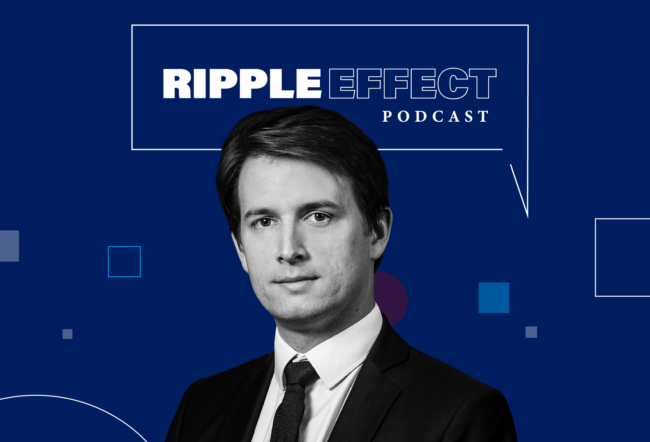Go to the website Yahoo.com and the world opens before you. Check e-mail, update your investment portfolio, shop for a car or vacation, do research for a term paper, read the news – you can do it all here, for free. That’s what made Yahoo one of the first big players on the Internet, and keeps it one of the web’s best-known names and most heavily visited sites. Remarkably, in this era of “burn rates,” when so many Internet companies spend shareholders’ money for years with only faint hope of turning profits, Yahoo has been in the black for 16 quarters. It is far and away the most popular pure portal on the web. But all is not perfect. Yahoo’s stock has tumbled to below $30 from a peak of $250 in January, and some Wall Street analysts are losing their enthusiasm for the company. Three months ago, 32 analysts had “strong buy” or “buy” ratings on the stock, while only three had pessimistic “hold” ratings – which many investors translate as “don’t buy” or even “sell.” Today only 21 analysts have “buy” or “strong buy” ratings; 11 rate Yahoo a “hold.” The immediate problem is concern that a national economic slowdown will undermine advertising, which accounts for about 90% of Yahoo’s revenues. Some observers are especially concerned that more than 40% of Yahoo’s revenues come from ads for dot-com companies, many of which may be forced to cut ad budgets by the financial woes sweeping that sector. Indeed, most Internet stocks have been hammered this year. Given that Internet use continues to grow, it seems inevitable, however, that some Internet companies will eventually emerge as winners. Can Yahoo be one of them? Some who have studied the company think its time is passing, but others feel it has a unique position and with a few smart adaptations could hold off competitors and remain a long-term player. “Yahoo, as an advertising company, is pretty strongly positioned,” says
Yahoo was founded in 1994 by Stanford University graduate students Jerry Yang and David Filo. It went public in April 1996 at a split-adjusted price of $1.08 a share. Headquartered in Santa Clara, Calif., it had about 3,000 employees at the end of September.
Initially, Yahoo provided a directory to the Internet, then a search engine for finding sites offered by other providers. While it now provides vast amounts of content on its own pages, it culls most of it from other sources and thus remains a pure portal – a doorway to the Internet – somewhat like those also offered free by Lycos, Altavista and Excite. A portal provides a way for customers to manage their exploration and use of the Internet.
In November, Yahoo had about 55 million visitors, making it the second most visited Internet destination, behind America Online, with about 63 million visitors, according to Internet tracker Media Metrix. Microsoft’s sites, the Excite Network and Lycos followed.
Top player America Online is part portal, part Internet Service Provider or ISP. America Online generates much of its own content, while Yahoo remains primarily a way to efficiently find other providers’ material. America Online charges users a monthly Internet access fee, while Yahoo is free except for a few premium services. To use Yahoo, one must already have Internet access via another ISP.
Expressing doubts about Yahoo’s future, James Biteman, adjunct professor of management at A.B. Freeman School of Business at Tulane University, says the need for portals like Yahoo may diminish as people get more accustomed to searching the Internet themselves. Also, he says, new “mega search engines” have now emerged, which make vast searches via other sites’ search engines. The best-known among them is Dogpile (www.dogpile.com), which presents aggregated search results from Yahoo, Altavista and several other search engines.
“Other retailers like Amazon.com are developing links to larger and larger retail bases – thus encroaching on one part of Yahoo’s territory,” Biteman says. “If you add to that the merger between Time-Warner and AOL, which threatens to dominate Internet-based entertainment, then there is little left for a pure portal like Yahoo.” That merger will give AOL users access to the enormous content provided by Time Warner’s magazines, music and movie divisions.
“Perhaps Yahoo can expand to integrate into one or more of the areas of activity that are being lost to other parties,” he says. “The idea, though, of a pure portal continuing to be viable is questionable. We aren’t sure what the portals will morph into, or whether Yahoo will successfully make the transition to the next form, whatever it is. It is an interesting process to watch.”
Wharton marketing professor Peter S. Fader argues that pure portals are in constant danger of a mass desertion of users, since customers make no financial commitment to the service, as they do when they sign up with an ISP needed to get online in the first place. Dumping Yahoo takes only a click of a mouse. Dumping AOL means canceling a payment arrangement, signing up with another ISP and then notifying all your contacts that you have a new e-mail address. Many users will stick with an ISP to avoid the hassle of moving, even if there’s a better deal elsewhere. That makes them, in a sense, captive to the ISP’s ads and fee-based services.
Moreover, Fader says, it is not yet clear that advertising revenue can sustain a website over the long term; it is too early to point to any proven models. Yahoo, he says, “was in the right place at the right time, I’ll give them credit for that. But that doesn’t give you any sustainable competitive advantage…If a portal is just a commodity, then Yahoo is in big trouble.”
Wharton’s Aron offers a more optimistic view. He believes Wall Street has overreacted to the possible decline of dot-com advertising, which he says may well be replaced by ads from more traditional bricks-and-mortar businesses. Yahoo already appears to be having some success with this shift. Dot-com revenue recently declined from 47% to 40% of total revenues, while total revenues remained constant, he says.
Yahoo, Aron says, has been able to charge advertisers an extraordinary premium to use its site, billing $150 per 1,000 user “impressions,” versus an Internet average of $5 per 1,000. An impression is essentially a customer decision to look at a message, such as a double click on a banner ad.
Why can Yahoo charge 30 times more than the going rate?
Because Yahoo has an extraordinarily sophisticated system for making sure ads are presented to the customers who are most likely to buy, says Aron. Yahoo, he says, is more than just an advertising vehicle, it is an “e-commerce enabler” and “infomediary” which takes an active role in nudging customers to make purchases.
“Yahoo knows who you are and what you like,” he says, adding that Amazon is the only other company with such sophistication.
As a customer navigates through Yahoo’s pages, each move is monitored. As it gathers information about a customer, the system looks at how other customers with similar patterns have behaved. What sites have they gone on to look at? What products and services have they bought? This insight is used to select the ads the user sees. And this information is not just used for after-the-fact analysis—it’s done in real time, affecting the customer’s experience while he is still online.
Thus Yahoo would know that you clicked on ads for BMW and Audi cars but didn’t take follow-up steps that could lead to a purchase. The system might conclude you are interested in foreign cars but not BMWs and Audis, so it would present you with ads for a Lexus, Aron says.
“The more information you give about yourself the more you are targeted,” he says. “Other companies use the buckshot [advertising] model. Yahoo uses the rifle model.”
Of course, this is only valuable to advertisers if people keep coming to Yahoo, and they don’t come to view ads. In the early years users came because Yahoo had a nifty list of cool Internet sites, and then Yahoo offered one of the first good search engines.
While there are now many search engines on the Internet, Aron believes millions of people still use Yahoo because its search engine remains one of the best, offering a good tradeoff between “recall” and “precision.” Engines that emphasize recall tend to generate hundreds or thousands of search results in response to the user’s search terms – so many the user is still left with an arduous chore to find what she wants. Yahoo emphasizes precision, offering a smaller, more digestible and better-targeted list of search results, Aron says.
Searches, however, are no longer the main reason users come to a portal. Most are now looking for content offered by the portal itself, says Aron. It is not certain, he said, that Yahoo will be able to compete with the AOL-Time Warner combination. “The jury is out on Yahoo as a media company,” he said.
Not only will Time Warner provide vast information and entertainment, it has a huge cable TV network that will give AOL users lightning-fast downloads.
But Yahoo isn’t sitting still in the face of this threat. In mid-December, Yahoo shares jumped 5.7% in a single day when the company announced an agreement giving its users access to Disney Internet Group’s ABCNews.com. Analysts speculated there could be further deals between Yahoo and the big information and entertainment company.
Yahoo executives also have said they are likely to reduce reliance on ad revenue by introducing new fee-based services, such as online music, though they say they will not charge fees for any services that currently are free.
As with most of the Internet, Yahoo’s future is far from clear. But most observers agree Yahoo is a tough, adaptable competitor with millions of loyal users. Despite the company’s problems this year, few count Yahoo out.


